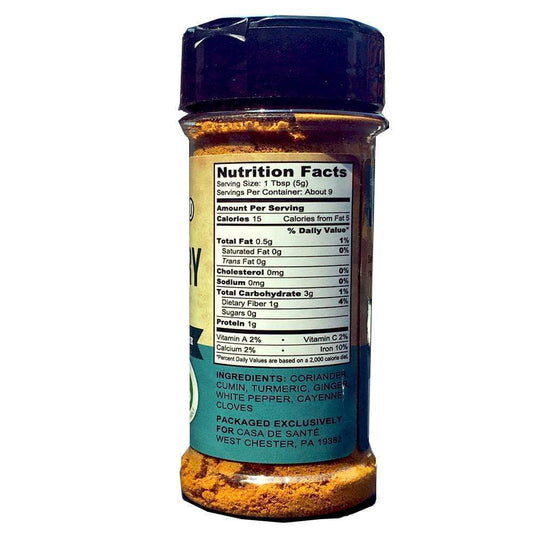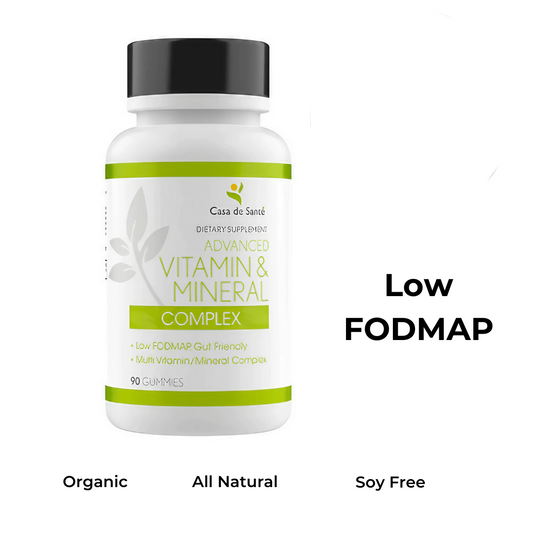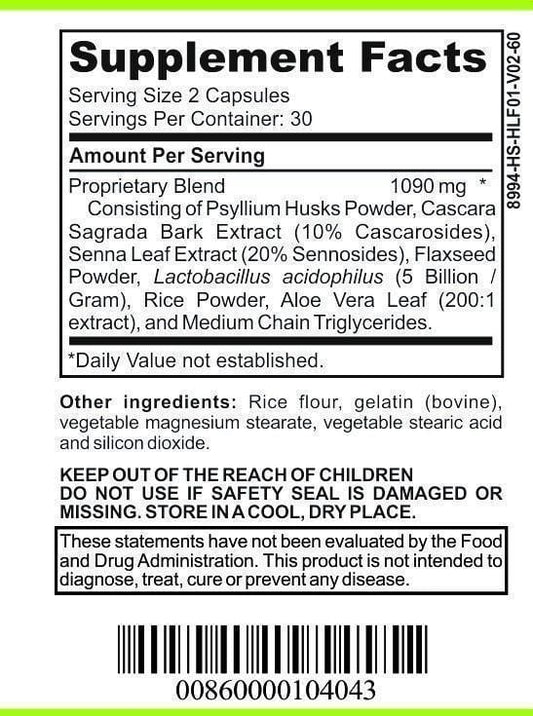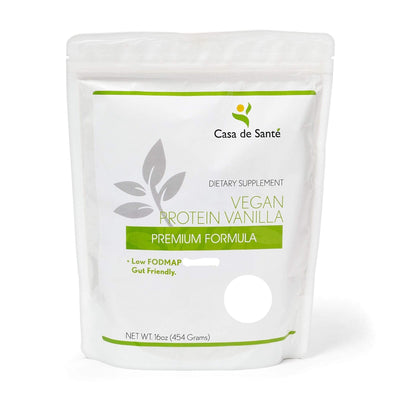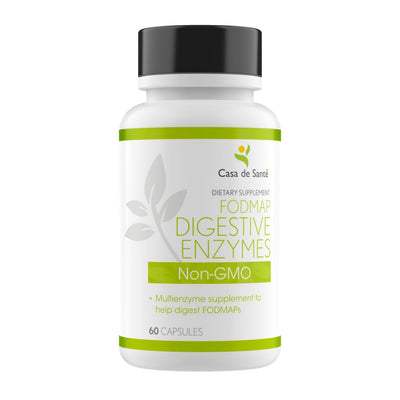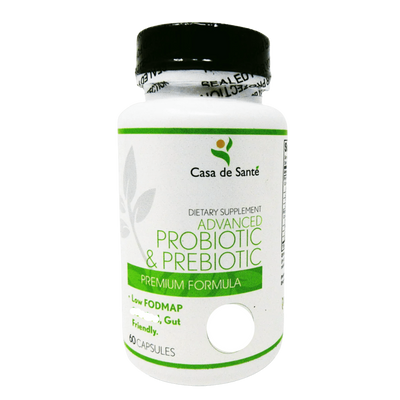Is Onion Powder High In Histamine
Is Onion Powder High In Histamine
In recent years, there has been an increased interest in understanding the effects of histamines on the body and how they relate to various foods. One particular concern that has surfaced is the histamine content of onion powder. In this article, we will delve into the world of histamines, explore the connection between food and histamines, examine the histamine levels in onion powder, and discuss strategies for managing histamine intolerance. So, let's start by understanding what histamines are.
Understanding Histamines
What are Histamines?
Histamines are natural substances produced by the body as part of the immune response. They play a vital role in defending the body against foreign invaders such as allergens and pathogens. Histamines are involved in various physiological processes, including regulating stomach acid secretion, maintaining blood vessel permeability, and controlling neurotransmitter activity.
When the body detects the presence of an allergen or an injury, it releases histamines into the bloodstream. These histamines bind to specific receptors in different parts of the body, triggering a cascade of reactions that ultimately aim to protect the body from harm.
For example, histamines can cause blood vessels to dilate, allowing immune cells to reach the affected area more easily. They also increase the permeability of blood vessels, allowing white blood cells to move out of the bloodstream and into the tissues where they can fight off any potential threats. Additionally, histamines can stimulate the production of mucus, which helps to trap and expel foreign particles from the respiratory system.
How Histamines Affect the Body
When histamines are released in response to an allergen or injury, they can cause symptoms such as itching, redness, swelling, and increased mucus production. This is why histamines are often associated with allergies, hay fever, and other immune-related conditions.
However, histamines don't always have a positive effect on the body. In some cases, individuals may experience an overreaction to histamines or have difficulty breaking them down, leading to a condition known as histamine intolerance. Histamine intolerance occurs when the body is unable to efficiently metabolize histamines, resulting in an excessive accumulation of these substances in the body.
People with histamine intolerance may experience a wide range of symptoms, including headaches, digestive issues, skin problems, and respiratory difficulties. These symptoms can vary in severity and may be triggered by certain foods that are high in histamines or that promote the release of histamines in the body.
It's important for individuals with histamine intolerance to be aware of the connection between food and histamines. Some foods, such as aged cheeses, fermented products, and cured meats, are naturally high in histamines. Consuming these foods can lead to an increase in histamine levels in the body, exacerbating symptoms in those with histamine intolerance.
In addition to high histamine foods, certain substances can also trigger the release of histamines in the body. These include alcohol, certain medications, and environmental factors such as pollen or pet dander. Avoiding these triggers and following a low histamine diet can help individuals with histamine intolerance manage their symptoms effectively.
Understanding histamines and their role in the body is essential for individuals who experience histamine intolerance. By making informed choices about their diet and lifestyle, they can minimize the impact of histamine-related symptoms and improve their overall well-being.
The Connection Between Food and Histamines
When it comes to the connection between food and histamines, there is much to explore. Histamines are compounds that are naturally present in certain foods and are also produced by our own bodies. While histamines play a vital role in our immune system, they can also cause adverse reactions in some individuals, leading to symptoms such as headaches, hives, and digestive issues.
Common High-Histamine Foods
Understanding which foods are high in histamines is crucial for individuals who are sensitive to these compounds. Aged cheeses, such as blue cheese and Parmesan, are well-known culprits when it comes to high histamine levels. The fermentation process involved in making these cheeses allows histamines to accumulate. Similarly, fermented foods like sauerkraut and kimchi, which are beloved for their tangy flavors and probiotic benefits, can also be problematic for those with histamine intolerance.
In addition to aged cheeses and fermented foods, cured meats are another category of high-histamine foods. Deli meats like salami, pepperoni, and ham are often cured using processes that promote histamine formation. For seafood lovers, shellfish like shrimp, lobster, and crab can also contain high levels of histamines. Moreover, certain types of fish, such as tuna and mackerel, are notorious for their histamine content.
It is important to note that while these foods are high in histamines, they may not cause symptoms in everyone. Each individual's tolerance to histamines can vary, and some people may be more sensitive than others. However, for those who experience histamine intolerance, it is best to avoid or consume these foods in moderation.
How Cooking Methods Influence Histamine Levels
Interestingly, the way we cook our food can also impact its histamine content. The longer food is cooked or stored, the higher the histamine levels may become. This is because histamines can accumulate over time, especially in foods that are left at room temperature for extended periods.
When it comes to minimizing histamine formation during cooking, certain techniques are more favorable than others. Steaming and boiling are cooking methods that can help reduce histamine levels in foods. These gentle cooking techniques involve the use of water, which helps to dilute and remove histamines. On the other hand, grilling and frying can lead to higher histamine levels due to the intense heat involved.
Furthermore, proper storage of foods is essential in managing histamine levels. Refrigerating perishable foods promptly and consuming them within a safe timeframe can help prevent histamine accumulation. Freezing foods can also be an effective way to preserve their freshness and minimize histamine formation.
By being mindful of cooking methods and storage practices, individuals with histamine intolerance can make informed choices to minimize their exposure to high histamine levels in food.
Onion Powder and Histamine Content
Nutritional Profile of Onion Powder
Before we delve into the histamine content of onion powder, let's take a quick look at its nutritional profile. Onion powder is a dehydrated form of onions and is commonly used as a seasoning in various dishes. It is rich in essential vitamins and minerals, including vitamin C, vitamin B6, folate, and potassium. Additionally, it is low in calories and fat, making it a popular choice for adding flavor to meals.
Onion powder is not only a flavorful addition to your dishes but also offers several health benefits. Vitamin C, found abundantly in onion powder, is known for its immune-boosting properties. It helps protect the body against harmful free radicals and supports collagen production for healthy skin. Vitamin B6, another nutrient present in onion powder, plays a vital role in brain development and function. It is involved in the production of neurotransmitters that regulate mood and cognitive function.
In addition to vitamins, onion powder is a good source of dietary fiber. Fiber aids in digestion and helps maintain a healthy gut. It can also contribute to weight management by promoting feelings of fullness and reducing calorie intake. Furthermore, the potassium content in onion powder supports heart health by regulating blood pressure levels.
Analyzing the Histamine Levels in Onion Powder
While onions themselves are not considered high in histamines, it is essential to examine the histamine levels in onion powder. Interestingly, research suggests that onion powder may contain varying amounts of histamine, depending on factors such as storage conditions and processing methods. However, the histamine levels found in onion powder are generally considered to be relatively low compared to other high-histamine foods.
Histamine is a natural compound produced by the body and is involved in various physiological processes. However, some individuals may have an intolerance to histamine, leading to adverse reactions when consuming foods high in histamine. Symptoms of histamine intolerance can range from mild to severe and may include headaches, hives, digestive issues, and respiratory problems.
It is crucial to note that individual tolerance levels may vary. Some individuals with histamine intolerance may still experience symptoms when consuming even small amounts of onion powder, while others may not be affected. Therefore, it is essential to listen to your body and monitor your reactions when consuming onion powder.
If you suspect that you have histamine intolerance, it is advisable to consult with a healthcare professional for proper diagnosis and guidance. They can help you identify trigger foods and develop a suitable dietary plan to manage your symptoms effectively.
Managing Histamine Intolerance
Histamine intolerance is a condition that occurs when there is an imbalance between the production and breakdown of histamine in the body. This can lead to a variety of symptoms, including headaches, hives, digestive issues, and respiratory problems. If you suspect that you have histamine intolerance, there are several strategies you can employ to manage your symptoms.
Dietary Changes for Histamine Intolerance
One of the most effective ways to manage histamine intolerance is through dietary changes. Adopting a low-histamine diet involves avoiding or reducing your intake of high-histamine foods and incorporating fresh, unprocessed alternatives. High-histamine foods include aged cheeses, fermented foods, cured meats, and certain types of fish. On the other hand, low-histamine foods include fresh fruits and vegetables, lean proteins, and whole grains.
It is important to note that the specific triggers for histamine intolerance can vary from person to person. Therefore, it is advisable to work with a qualified healthcare professional or registered dietitian to develop an individualized dietary plan. They can help you identify your specific triggers and create a meal plan that meets your nutritional needs while minimizing histamine intake.
Medical Treatments for Histamine Intolerance
In addition to dietary changes, there are medical treatments available for managing histamine intolerance. Antihistamine medications can help block the effects of histamines in the body, providing relief from symptoms. These medications work by binding to histamine receptors, preventing histamine from causing inflammation and other allergic reactions.
However, it is important to note that antihistamine medications should be used under the guidance of a healthcare professional. They are typically recommended for short-term use, as long-term use can lead to side effects such as drowsiness and dry mouth. Your healthcare provider can help determine the appropriate dosage and duration of treatment based on your individual needs.
In some cases, other medications may be prescribed to manage specific symptoms associated with histamine intolerance. For example, if you experience gastrointestinal issues, your healthcare provider may recommend medications to reduce stomach acid or improve digestion.
It is also worth noting that managing histamine intolerance may require a multi-faceted approach. In addition to dietary changes and medications, stress management techniques, such as meditation or yoga, may be beneficial in reducing symptoms. Additionally, avoiding environmental triggers, such as pollen or pet dander, can help minimize histamine release in the body.
In conclusion, managing histamine intolerance involves a combination of dietary changes and medical treatments. Working with a healthcare professional can help you develop an individualized plan that addresses your specific symptoms and triggers. By implementing these strategies, you can effectively manage histamine intolerance and improve your overall quality of life.
Other Low-Histamine Alternatives to Onion Powder
Spices and Herbs with Low Histamine Levels
If you're looking for low-histamine alternatives to onion powder to enhance the flavor of your meals, there are several options to consider. Many spices and herbs have low histamine levels and can provide a similar taste profile. Some examples include basil, oregano, thyme, parsley, and turmeric. Experimenting with these alternatives can add a delightful twist to your dishes while managing histamine intolerance.
Making Your Own Low-Histamine Seasonings
Another option is to create your own low-histamine seasonings at home. By combining herbs, spices, and other flavorings that are known to have low histamine levels, you can customize your seasonings to suit your taste preferences. This way, you have full control over the ingredients and can be confident in knowing their histamine content.
In conclusion, while onion powder may contain some histamines, the levels are generally considered to be relatively low compared to other high-histamine foods. Individuals with histamine intolerance should listen to their bodies and monitor their reactions when consuming onion powder. By making dietary changes, seeking medical guidance, and exploring alternative seasonings, individuals can successfully manage histamine intolerance while still enjoying delicious meals.














